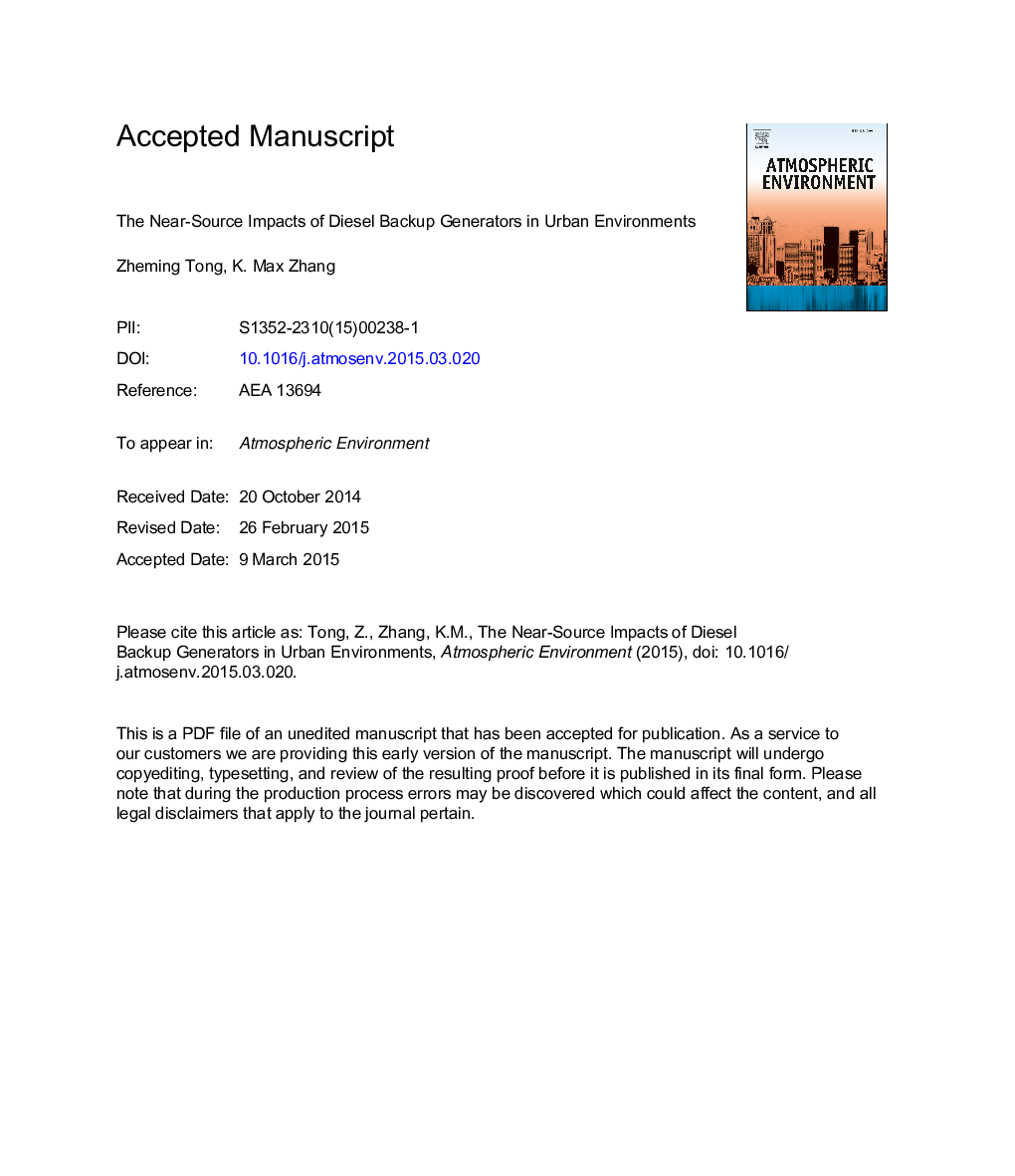| کد مقاله | کد نشریه | سال انتشار | مقاله انگلیسی | نسخه تمام متن |
|---|---|---|---|---|
| 6338243 | 1620362 | 2015 | 25 صفحه PDF | دانلود رایگان |
عنوان انگلیسی مقاله ISI
The near-source impacts of diesel backup generators in urban environments
ترجمه فارسی عنوان
تأثیرات منبع اصلی ژنراتورهای پشتیبان دیزلی در محیط های شهری
دانلود مقاله + سفارش ترجمه
دانلود مقاله ISI انگلیسی
رایگان برای ایرانیان
کلمات کلیدی
موضوعات مرتبط
مهندسی و علوم پایه
علوم زمین و سیارات
علم هواشناسی
چکیده انگلیسی
Distributed power generation, located close to consumers, plays an important role in the current and future power systems. However, its near-source impacts in complex urban environments are not well understood. In this paper, we focused on diesel backup generators that participate in demand response (DR) programs. We first improved the micro-environmental air quality simulations by employing a meteorology processor, AERMET, to generate site-specific boundary layer parameters for the Large Eddy Simulation (LES) modeling. The modeling structure was then incorporated into the CTAG model to evaluate the environmental impacts of diesel backup generators in near-source microenvironments. We found that the presence of either tall upwind or downwind building can deteriorate the air quality in the near-stack street canyons, largely due to the recirculation zones generated by the tall buildings, reducing the near-stack dispersion. Decreasing exhaust momentum ratio (stack exit velocity/ambient wind velocity) draws more exhaust into the recirculation zone, and reduces the effective stack height, which results in elevated near-ground concentrations inside downwind street canyons. The near-ground PM2.5 concentration for the worst scenarios could well exceed 100 μg mâ3, posing potential health risk to people living and working nearby. In general, older diesel backup generators (i.e., Tier 1, 2 or older) without the up-to-date emission control may significantly increase the pollutant concentration in the near-source street canyons if participating in DR programs. Even generators that comply with Tier-4 standards could lead to PM hotspots if their stacks are next to tall buildings. Our study implies that the siting of diesel backup generators stacks should consider not only the interactions of fresh air intake and exhaust outlet for the building housing the backup generators, but also the dispersion of exhaust plumes in the surrounding environment.
ناشر
Database: Elsevier - ScienceDirect (ساینس دایرکت)
Journal: Atmospheric Environment - Volume 109, May 2015, Pages 262-271
Journal: Atmospheric Environment - Volume 109, May 2015, Pages 262-271
نویسندگان
Zheming Tong, K. Max Zhang,
